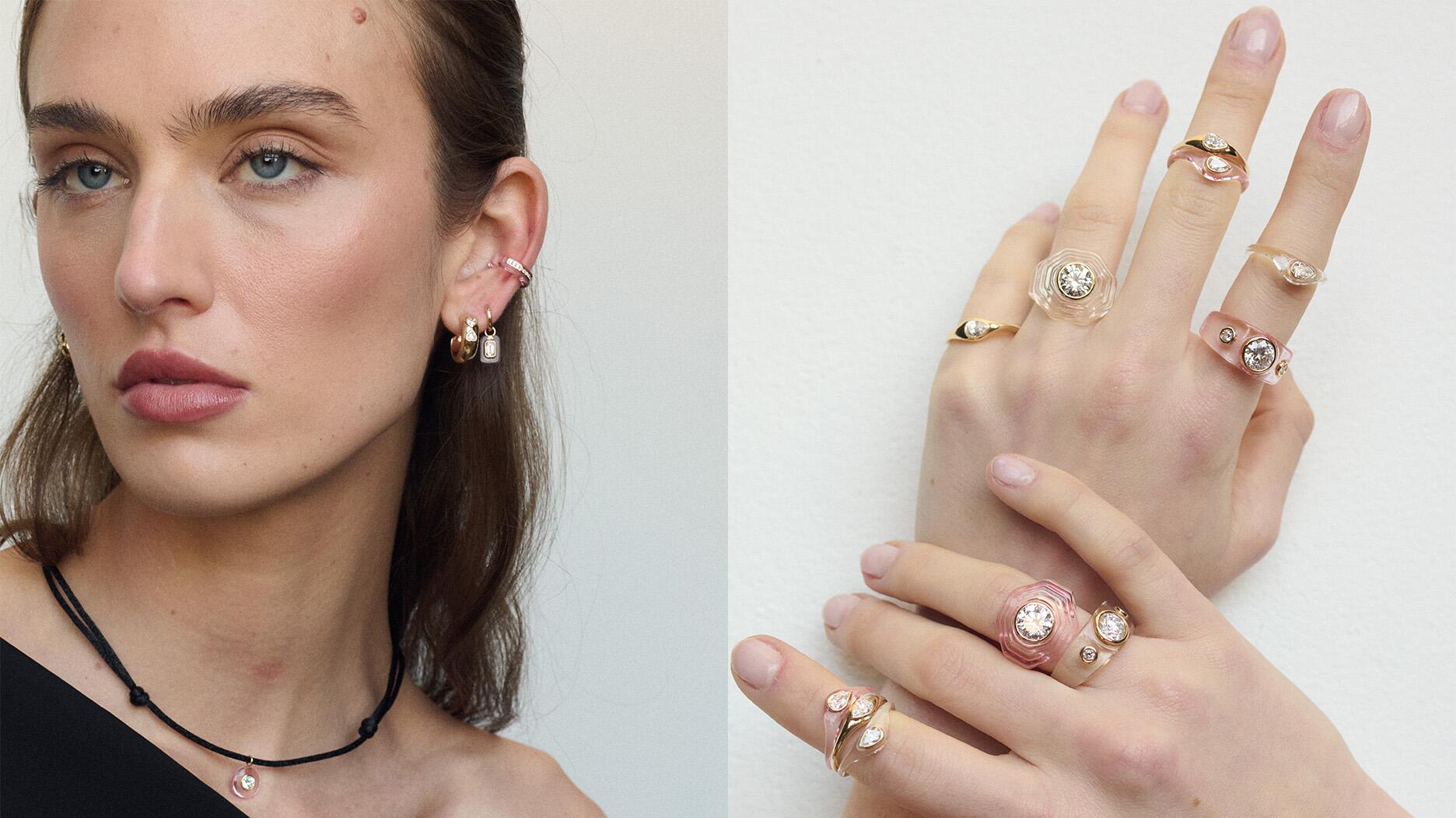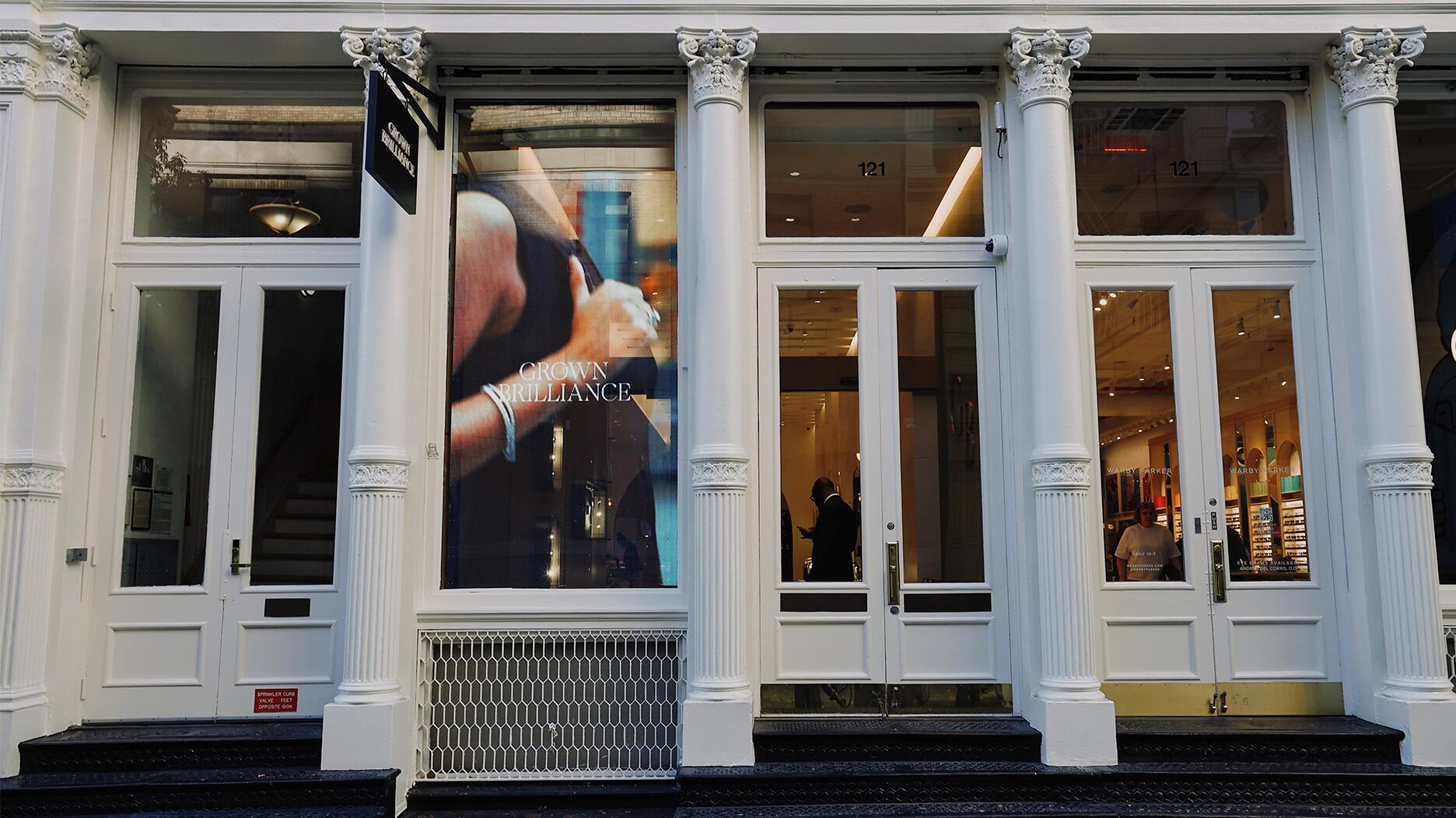GIA Reverting to More General Terminology for Lab-Grown Diamonds
It will quit assigning the stones specific color and clarity grades in favor of applying “new descriptive terminology.”

This time, the lab is going right back to where it started from, sort of.
On Monday, GIA announced that beginning later this year, it will quit using the color and clarity nomenclature it developed for natural diamonds in evaluating lab-grown diamonds.
Instead, the lab will, first, confirm that the submitted stone is a laboratory-grown diamond and then evaluate its color, clarity, and finish to determine if it falls into one of two categories: “premium” or “standard.”
If the lab-grown diamond fails to meet the minimum standard for quality, it will not receive a designation from GIA.
The lab said it is making the change in response to the dramatic compression in the range of color and clarity seen in lab-grown diamonds, a change that has come about as a result of continual improvements in diamond-growing technology in recent years.
It also noted that this revision will “help consumers understand the important differences in the two products’ origin, ensuring their confidence and enabling them to make informed and educated purchase decisions.”
GIA said that since 2022, 95 percent of the man-made diamonds submitted to the lab for grading have been colorless, meaning they would receive a grade of D, E, or F, while 98 percent received a clarity grade of VS1 or higher.
Executive Vice President and Chief Laboratory and Research Officer Tom Moses remarked, “Similar to other man-made gem materials, we anticipate the continued acceptance and popularity of laboratory-grown diamonds.
“More than 95 percent of laboratory-grown diamonds entering the market fall into a very narrow range of color and clarity. Because of that, it is no longer relevant for GIA to describe man-made diamonds using the nomenclature created for the continuum of color and clarity of natural diamonds.”
Moses’ remarks echo those he made in a 2016 interview with National Jeweler in which he explained the rationale behind GIA’s approach to grading lab-grown diamonds.
At that time, GIA used broader terms to describe lab-grown diamonds, calling stones in the D-F range “colorless” and those in the G-I range “near colorless,” and using only four clarity grades for the stones, VVS, VS, SI or I, compared with 11 for natural diamonds.
Moses said at the time that GIA chose to do it this way because lab-grown diamonds just aren’t going to have the same color and clarity range as mined diamonds.
To GIA, it didn’t make sense to apply its grading system—which Moses noted was developed for “normal mine run” in the 1940s, long before lab-grown diamonds were hitting the market in the quantities they are today—to man-made diamonds.
GIA first began accepting lab-grown diamonds for grading in 2006.
It announced the first shift in how it approaches the stones after the Federal Trade Commission rolled out its revised Jewelry Guides in 2018. Among the revisions was the removal of the word “synthetic” from the list of recommended terms for referring to lab-grown diamonds.
In light of this update, the lab announced in April 2019 that it would be changing the name of what was then called the GIA Synthetic Diamond Grading Report to the GIA Laboratory-Grown Diamond Report.
It also started including the standard color, clarity and cut grading scales on the reports, but for reference purposes only; the lab did not start grading lab-grown diamonds the same way it did natural stones.
A little more than a year later, that changed.
In August 2020, GIA announced that it would start using the same specific color and clarity grades for both natural and lab-grown diamonds, citing the “growing acceptance in the trade and by consumers of laboratory-grown diamonds as a distinct category.”
Now, nearly five years since that announcement, GIA is pivoting yet again.
This time, the lab is arguably using even broader terminology than it did when it first started accepting lab-grown diamonds for grading nearly 20 years ago.
It is going from using the terms “colorless” or “near colorless” and a limited range of clarity grades to evaluating both qualities together, along with finish, to determine if man-made stones are “premium” or “standard.”
GIA said it is still developing pricing and submission guidelines for its new lab-grown diamond grading service.
It expects to announce more specifics in the third quarter. In the meantime, existing GIA reports for lab-grown diamonds remain valid.
The release does not mention if the reports, or whatever is forthcoming with this new service, will have a different name.
It also does not mention if there will be any changes to the way GIA applies the other two Cs to lab-grown diamonds—carat weight and cut, which is a factor introduced during the manufacturing process and thereby can exist on a broad continuum for both natural and lab-grown diamonds.
GIA said its current services for lab-grown diamonds will continue to be available until the revised descriptive system for lab-grown diamonds is finalized later this year.
The Latest

Carlos Jose Hernandez and Joshua Zuazo were sentenced to life without the possibility of parole in the 2024 murder of Hussein “Sam” Murray.

Yood will serve alongside Eduard Stefanescu, the sustainability manager for C.Hafner, a precious metals refiner in Germany.

The New Orleans jeweler is also hosting pop-up jewelry boutiques in New York City and Dallas.

How Jewelers of America’s 20 Under 40 are leading to ensure a brighter future for the jewelry industry.

Set in a Tiffany & Co. necklace, it sold for $4.2 million, the highest price and price per carat paid for a Paraíba tourmaline at auction.


The jeweler’s “Deep Freeze” display showcases its iconic jewelry designs frozen in a vintage icebox.

Take luxury gifting to new heights this holiday season with the jeweler’s showstopping 12-carat sphene ring.

Roseco’s 704-page catalog showcases new lab-grown diamonds, findings, tools & more—available in print or interactive digital editions.

This year's theme is “Unveiling the Depths of the Ocean.”

In its annual report, Pinterest noted an increase in searches for brooches, heirloom jewelry, and ‘80s luxury.

Starting Jan. 1, customers can request the service for opal, peridot, and demantoid garnet.

The 111-year-old retailer celebrated the opening of its new location in Salem, New Hampshire, which is its third store in the state.

The new catalog features its most popular chains as well as new styles.

The filmmaker’s personal F.P. Journe “FFC” prototype was the star of Phillips’ recent record-setting watch auction in New York.

The new location in the Design District pays homage to Miami’s Art Deco heritage and its connection to the ocean.

Inflations, tariffs, and politics—including the government shutdown—were among consumers’ top concerns last month.

“Longtime favorite” presenters, as well as first-time speakers, will lead talks and workshops at the annual event in Tucson next year.

Silas Smith of Meridian Metalworks won the challenge with his pendant that blends Australian and American landscapes.

The sale of the 31.68-carat, sunset-hued stone was part of Sotheby’s first series of events and auctions in Abu Dhabi.

Most customers who walk into your store this month have made up their minds. Your job is to validate their choice, Emmanuel Raheb writes.

The collection features characters and motifs from Ukrainian folklore, including an enchanted mirror and a magic egg.

MatrixGold 3.11, the newest version of the jewelry design program, offers more flexibility, precision, and creative control.

The pavilion will be part of the 2026 JA New York Spring show, scheduled for March 15 to 17.

Kadet, a 1994 National Jeweler Retailer Hall of Fame inductee, helped grow the family-owned retailer in the Chicago area and beyond.

Billed as the world’s smallest wearable, Lumia Health’s new smart earrings have a health tracker subtly embedded in the back.

Don’t let those with December birthdays feel blue. Help them celebrate their month with blue zircon, turquoise, and tanzanite.

The new pink sapphire version of the piece dances with its wearer in the brand’s “Icons After Dark” holiday campaign.




























